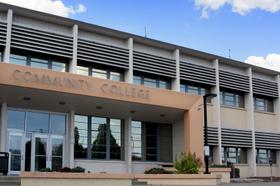Looking for a fun way for your kids to spend their summer vacation? How about a week or two at college? Many community colleges are bringing camps and workshops to their campuses across the country, allowing future college students of all ages the chance to dabble in technology, theatre and a host of sports. The offerings vary in terms of length of time, cost and curriculum, allowing students from a wide range of interests to pursue a new hobby or hone their skills at a current discipline. This article will highlight some of the community college programs available this summer across the country.
Bringing the Arts and Physical Education to New Mexico Kids
Clovis Community College has plenty to offer kids on break this summer at their CCC Kid's College. The school provides a range of classes in their summer outreach program, including science, arts and crafts and physical education. Students can create their own volcano while learning about the different rock that is created during an eruption. They can build bird houses to decorate their backyards. They can develop skills in tennis, bowling and volleyball. CCC offers some of the best – and most creative – courses for kids in New Mexico beginning at age five.
Kid's College Director Judith Spillane told cnjonline.com, "We wanted to offer both educational and physical educational programs. All of the classes have education and skills components, including our athletic programs."
Registration is currently underway at Clovis Community






















